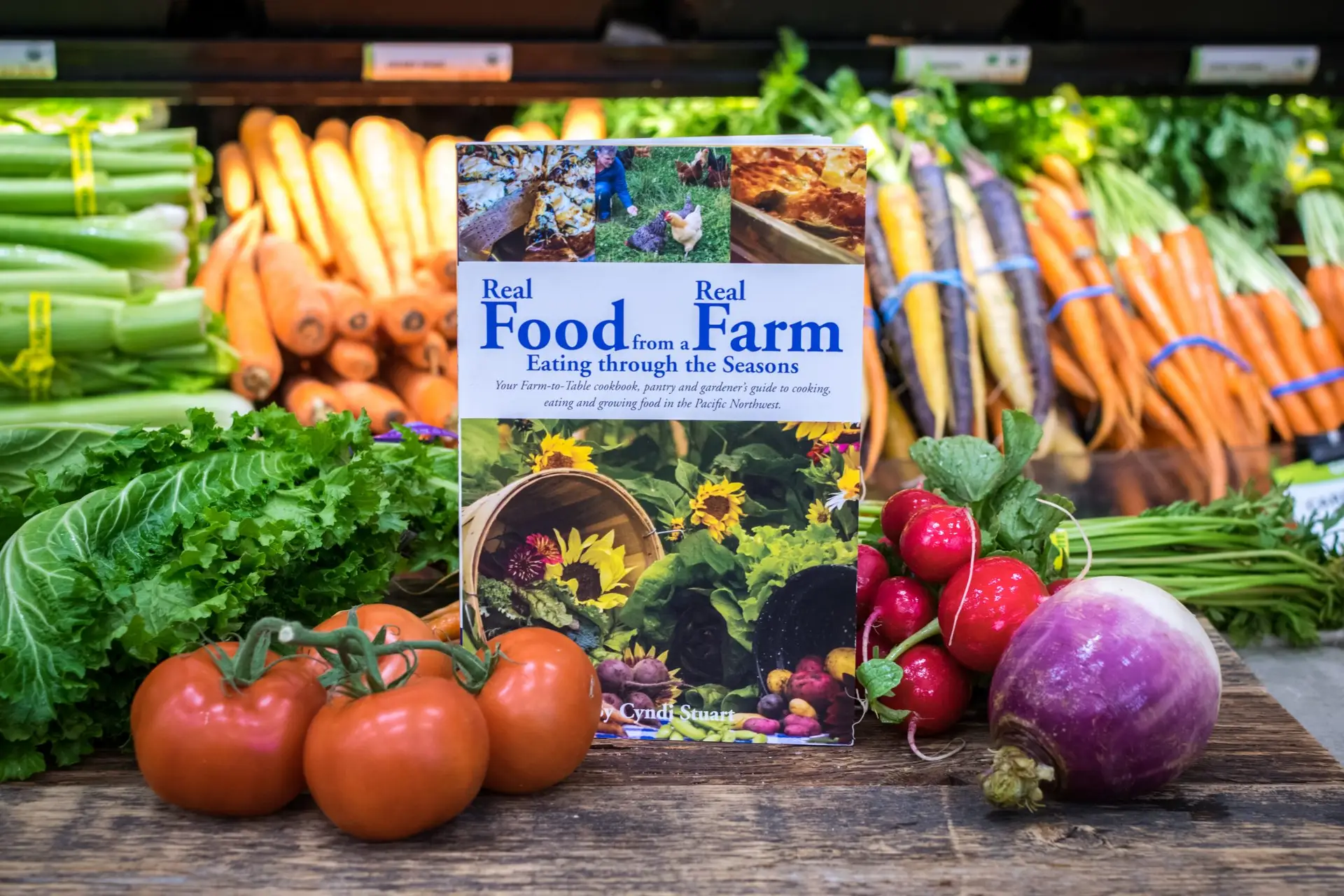The Role Of Real Food In Your Diet
LifeSource Natural Foods | Posted on |


February 1997
By Michael Proctor
A well-respected colleague once said “good nutrition doesn’t have to come from a capsule.” Actually, it probably can’t. Nutritional supplements may be used to supply micro-nutrients (vitamins, minerals), macro-nutrients (protein, carbohydrate, fat) or even non-nutrients (fibers, enzymes, probiotics). However, there are thousands of chemical compounds occuring in fresh foods that are not (or cannot be) manufactured into a pill or a powder. No matter how many supplements you take (or don’t), nothing replaces good groceries.
Although current scientific research demonstrates beneficial properties for many compounds found in fresh whole foods, they are not defined as “essential” nutrients, and have no “recommended daily allowance” or RDI (reference daily intake). Of the many valuable compounds found in real foods, this article will focus on anitoxidants and anticarcinogens. A list of some of these so called non-essential compounds that show antioxidant and/or anticarcinogenic properties, along with the best food sources of each compound, is at the bottom of this article.
These are the real superfoods, at least in terms of antioxidants and anticarcinogens. The standouts are soybeans and cruciferous vegetables (broccoli, cauliflower, cabbage, kale, collards, brussels sprouts, turnips and radishes), but there are clearly a multitude of important compounds in a wide variety of plant foods. One group of chemicals, phytoalexins, part of a larger class of compounds called phytoestrogens, are produced by plants as a stress response. One group of phytoalexins, isoflavones, are nearly exclusive to soybeans. One of these isoflavones, genistein, is the subject of over 200 published research papers describing its powerful anticancer properties. The isoflavones can also exert a mild estrogenic effect. One cup of soybeans would yield about 300 mg of isoflavone, approximately equivalent to one tablet of Premarin, a prescription estrogen replacer.
Plant pigments represent a large and powerful group of phytochemicals, some of which are popular as supplements. Chlorophyll, (found in green foods and their juices) in a fat-soluble form, produces significant antioxidant and anticancer effects. The water-soluble form found in most supplements does not produce the same effects, although it does provide other benefits. Carotenes contribute yellow-orange color to many foods. Over 500 carotenes have been identified, but only 30 to 50 of them are believed to have vitamin A activity. Many deep green or orange vegetables and fruits provide a variety of carotenes, many of which may have properties even more beneficial than a capsule of beta-carotene, lycopene or lutein.
Flavonoids are another large group of plant pigments, responsible. for blues and reds in fruits and a few vegetables, Over 4,000 flavonoid compounds have been identified, but only a handful have shown up as supplements, usually accompanying vitamin C.
This category of phytochernical includes such unpronouncabes as proanthocyanins, eatechins, and criercetin. Many flavonoids also exhibit antiviral and/or anti-inflammatory properties, as well as antioxidant and anticarcinogenic effects. Blueberries, black raspberries, cherries, citrus fruits, rhubarb, onions, parsley, green tea, and red wine are rich in flavonoids.
Many compounds, such as the glutathione in raw fruits and vegetables, and the ellagic acid in grapes, cherries and strawberries, do not hold up well through cooking. Heat stability is also a concern with enzymes, and micro- and macro-nutrients, so it makes sense to consume raw foods regularly. Whole foods that have been reduced to a powder, no matter how carefully the water is removed, must suffer a loss of one (or many) constituents.
Juicing is generally better than drying, but reduces fiber and may increase relative consumption of sugar. Focus on a plant based diet and you receive another benefit — drastic reduction in consumption of pesticide residues. In the U.S. food supply, meat and dairy contribute over ten times more of these residues than plant foods do.
As we learn more about these compounds and their therapeutic effects, we will undoubtedly see more showing up in the form of nutritional supplements. These supplements are extremely valuable, however, they are just that — supplements. Only whole foods will provide all that sustains us.
You may be asking, “Just how convoluted and complex can this be?”
Good nutrition doesn’t have to be complex, even though the food itself is. Choosing the right groceries is of primary importance, and fairly simple. At LifeSource buy more items from the sections of the store that ring the outside, (organically grown produce and bulk grains, beans, nuts and seeds).
If you need ideas about what to do with whole foods, please ask. — we love to help!
If you believe that the vital essence of plants cannot be encapsulated, or even fully understood, then don’t let your quest for pure, nutritious food ever be replaced by pills, powders or liquids. We’re “built for comfort, not for speed,” as the old song goes, and though it’s speedy to pop a pill, there’s nothing more comforting than a good meal.
Food Sources of
Antioxidants & Anticarcinogens
Allium Compounds – onions, garlic, leeks, chives
Carotenes – deep green or orange veggies & fruits
Chlorophyll – deep green leafy vegetables
Coumarins – carrots, celery, beets, and citrus fruits
Dithiolthiones – broccoli, cauliflower, cabbage, kale
Flavonoids – most fruits and vegelables
Glucosinolaies, indoles – broccoli, cauliflower, cabbage, kale
inositol hexaphosophate- soybeans, grains
Isollavenes – soybeans
Isothiocynate, thiocynate -broccoli, cauliflower, cabbage, kale
Lignans – seeds, grains, legumes
Limonenes – citrus fruits
Phenols – most fruits and vegetables
Plant sterols – soybeans, grains, cucumbers
Protease – seeds and legumes
Saponins – soybeans, most plants



Leave a Reply